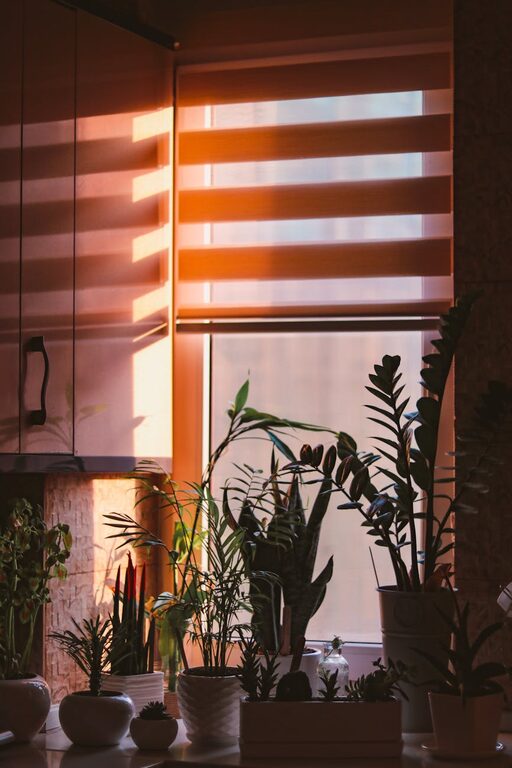Bringing plants into your home is one of the easiest and most rewarding ways to refresh your living space. Not only do plants add natural beauty, but they can also boost your mood, purify the air, and create a calming environment. Whether you’re a seasoned plant enthusiast or a beginner, adding greenery doesn’t have to feel overwhelming. In this post, we’ll explore practical tips for selecting, arranging, and caring for houseplants to breathe new life into your home.
Why Add Plants to Your Home?
Plants offer many benefits beyond their appearance:
– Improve Air Quality: Certain plants help filter toxins and increase oxygen levels indoors.
– Enhance Mood: Caring for plants has been shown to reduce stress and improve mental well-being.
– Boost Decor: Plants add texture, color, and life to any room.
– Create a Cozy Atmosphere: Greenery makes spaces feel fresh, inviting, and warm.
Even a few well-placed plants can change the way your home feels and functions.
Choosing the Right Plants for Your Space
Selecting the right plants is key to success. Consider these factors before you shop:
Light Availability
Different plants thrive under different lighting conditions:
– Bright, Direct Light: Succulents, cacti, and fiddle leaf figs prefer lots of direct sunlight.
– Bright, Indirect Light: Peace lilies and snake plants do well near windows without intense sun.
– Low Light: Pothos, ZZ plants, and spider plants can tolerate lower light areas.
Assess the light in your intended plant spot to pick species that suit the environment.
Maintenance Level
Be honest about the time you can dedicate to plant care:
– Low Maintenance: Succulents, ZZ plants, and snake plants require infrequent watering.
– Moderate Care: Peace lilies and pothos need watering about once a week.
– High Care: Ferns or orchids may need more attention and humidity.
If you’re new to plants, start with easier varieties while you learn.
Size and Space
Think about the size of plants in relation to your space:
– Small Plants: Good for desks, shelves, and countertops (e.g., succulents, air plants).
– Medium Plants: Ideal for end tables or floor areas (e.g., spider plants, peace lilies).
– Large Plants: Great for corners or open floor spaces (e.g., fiddle leaf fig, monstera).
Make sure your plant has room to grow and won’t overcrowd your area.
Creative Ways to Display Plants
Once you’ve chosen your plants, consider creative ways to display them that complement your home’s style.
Use Decorative Pots
Choose pots that match your décor theme. Options include:
– Ceramic or terracotta pots for a rustic feel
– Sleek metal or concrete planters for modern spaces
– Woven baskets to add texture and warmth
Avoid plain plastic pots if you want to make plants a design focus.
Group Plants Together
Group small plants together to create a mini indoor garden. Using varying heights and leaf shapes adds visual interest.
Hang Your Plants
Hanging planters free up surfaces and draw the eye upward, especially for trailing plants like pothos or ivy.
Create a Plant Shelf or Corner
Dedicate a shelf or a corner of your room to multiple plants. Adding small décor items like candles or books can make it a cozy nook.
Use Plant Stands or Holders
Elevate plants with stands or holders to add layers and prevent clutter on countertops or floors.
Easy Plant Care Tips for Beginners
Keeping plants healthy ensures they continue to brighten your home.
– Water Wisely: Overwatering is a common mistake. Check soil moisture before watering, and use pots with drainage holes.
– Light Balance: Adjust the plant’s location if leaves become yellow or pale, which indicates too much or too little light.
– Fertilize Occasionally: Use a balanced, water-soluble fertilizer monthly during the growing season.
– Dust Leaves: Dust can block sunlight, so gently wipe leaves with a damp cloth.
– Rotate Plants: Turn plants regularly to ensure even growth on all sides.
Seasonal Plant Refresh
Change up your plant arrangements seasonally to keep your space feeling fresh.
– Spring: Add blooming plants like orchids or African violets.
– Summer: Incorporate vibrant greenery with easy-to-grow succulents.
– Fall: Bring in warm-toned pots or foliage plants with autumn hues.
– Winter: Choose hardy plants that tolerate cooler indoor temps, like snake plants and peace lilies.
Final Thoughts
Refreshing your home with plants doesn’t require a green thumb or tons of effort. By selecting the right plants for your lighting and lifestyle, creatively displaying them, and adopting simple care habits, you can transform your space into a soothing, beautiful environment.
Start small, enjoy the process, and watch your home come alive with nature’s charm. Happy planting!


